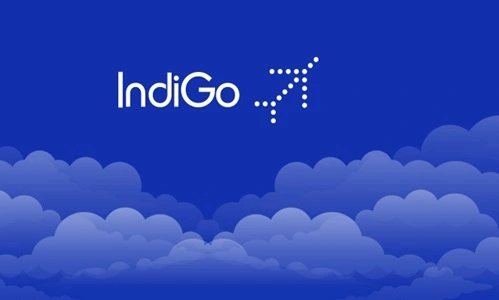InterGlobe Aviation Ltd., operating under the brand IndiGo, is India’s largest and most successful low-cost airline. Founded in 2006, IndiGo has established itself as the dominant player in India’s highly competitive aviation sector, known for its affordable pricing, extensive network, and on-time performance. With a market share of over 50% in the domestic aviation market, IndiGo has consistently maintained its leadership position by focusing on cost efficiency, operational reliability, and customer service. However, the airline industry faces unprecedented challenges and transformations, including rising fuel costs, post-pandemic recovery, and competitive pressures. This SWOT (Strengths, Weaknesses, Opportunities, Threats) analysis provides insights into IndiGo’s current market position and future outlook in India’s evolving aviation landscape.

Strengths
1. Market Leadership and Strong Brand Position:
IndiGo is India’s largest airline by market share, operating over 1,600 flights daily across domestic and international destinations. Its brand is synonymous with reliability, affordability, and on-time performance. IndiGo’s market leadership gives it significant advantages in negotiating with suppliers, attracting partnerships, and maintaining a broad customer base. The brand’s reputation for punctuality and value for money has helped it build a loyal customer base, particularly among price-sensitive and frequent travelers.
2. Cost-Effective, Low-Cost Carrier (LCC) Model:
IndiGo’s business model as a low-cost carrier (LCC) has been instrumental in its success. By operating with a single-class configuration, focusing on short-haul routes, and implementing cost-efficient processes, IndiGo has maintained profitability in an industry notorious for its thin margins. Its strategy of high aircraft utilization, direct flights, and minimal add-ons enables it to keep ticket prices competitive. This focus on cost control and operational efficiency gives IndiGo a substantial edge over full-service carriers that face higher operating costs.
3. Large and Young Fleet with Single Aircraft Type:
IndiGo operates one of the youngest fleets in the industry, primarily composed of Airbus A320 family aircraft, with recent additions of A321neo and A320neo models. The standardized fleet minimizes maintenance costs, simplifies training, and streamlines operations. IndiGo’s young fleet also allows for fuel efficiency, which is critical given the high volatility of fuel prices in aviation. The single-aircraft strategy contributes to a streamlined and cost-effective operation, enhancing reliability and reducing operational complexity.
4. Extensive Domestic and Expanding International Network:
IndiGo has established a strong domestic network, serving major and regional airports across India. This extensive reach gives IndiGo a competitive advantage, allowing it to capture demand in both metros and smaller cities. Moreover, IndiGo has been expanding internationally, with flights to destinations in Asia, the Middle East, and, more recently, Europe. This strategic international expansion diversifies its revenue base, reducing dependency on the domestic market and providing a buffer against domestic demand fluctuations.
Weaknesses
1. Heavy Dependence on Domestic Market:
Despite its recent international expansion, IndiGo remains heavily reliant on the Indian domestic market, with the majority of its revenue generated from domestic routes. This over-dependence on the Indian market makes IndiGo vulnerable to economic fluctuations, regulatory changes, and competitive pressures within India. Economic slowdowns, regional crises, or regulatory changes affecting domestic aviation could impact IndiGo’s financial performance.
2. Limited Differentiation and Reliance on Price Competition:
As a low-cost carrier, IndiGo’s main value proposition is affordability. While this appeals to cost-conscious travelers, it limits IndiGo’s ability to differentiate itself from other LCCs solely on price. In a price-sensitive market, competing airlines can match IndiGo’s pricing, eroding its competitive advantage. IndiGo’s lack of premium services and additional amenities may limit its appeal to high-income and business travelers who prioritize comfort and services over price.
3. Exposure to Fuel Price Volatility:
Fuel is one of the largest cost components in the airline industry, accounting for nearly 40% of operating expenses. IndiGo’s profitability is therefore highly susceptible to fluctuations in global crude oil prices. Despite hedging strategies, the airline’s dependence on jet fuel prices remains a significant vulnerability. Rising fuel costs can put pressure on profit margins, especially when regulatory or competitive constraints limit IndiGo’s ability to pass these costs onto passengers.
4. High Dependence on Single Aircraft Supplier (Airbus):
IndiGo’s fleet is entirely composed of Airbus aircraft, primarily from the A320 family. While this streamlines operations, it also creates a dependency on a single aircraft supplier, which could expose IndiGo to potential risks if Airbus faces production delays, technical issues, or supply chain disruptions. Additionally, this lack of fleet diversification may limit IndiGo’s flexibility to adapt to changing market demands or pursue routes requiring different aircraft configurations.
Opportunities
1. Growth in India’s Domestic and Regional Aviation Market:
India’s aviation market is projected to grow significantly, driven by rising disposable incomes, urbanization, and a growing middle class. The government’s UDAN (Ude Desh ka Aam Naagrik) scheme aims to make air travel affordable and enhance connectivity in underserved regions, creating new opportunities for airlines. IndiGo’s strong domestic presence and regional expansion plans position it well to capture this growth, particularly by expanding routes to Tier 2 and Tier 3 cities.
2. Expansion into High-Growth International Markets:
IndiGo’s ongoing international expansion provides a valuable growth avenue, allowing it to diversify revenue sources and reduce dependency on the Indian market. By targeting high-growth regions such as the Middle East, Southeast Asia, and Europe, IndiGo can tap into the rising demand for budget international travel. The potential for increasing frequencies, adding new destinations, and exploring partnerships with international carriers offers additional revenue streams and brand visibility on a global scale.
3. Leveraging Digital Innovation and Ancillary Revenue Streams:
Digital transformation in the aviation industry offers IndiGo an opportunity to enhance customer experience, improve operational efficiency, and generate ancillary revenues. Investing in digital tools, such as self-check-in kiosks, mobile apps, and AI-driven customer service, can streamline operations and increase customer satisfaction. Ancillary services, such as priority boarding, seat selection, in-flight sales, and loyalty programs, can provide additional revenue sources, boosting overall profitability.
4. Increasing Demand for Air Cargo Services:
The COVID-19 pandemic highlighted the importance of air cargo services, particularly with the growth of e-commerce. IndiGo has been ramping up its cargo operations through IndiGo CarGo, leveraging its extensive network and fleet. Expanding its cargo services could be a lucrative revenue stream, particularly as e-commerce continues to grow and demand for express cargo and logistics services increases. By developing its cargo capabilities, IndiGo can diversify revenue and optimize fleet utilization.
Threats
1. Intense Competition in the Low-Cost Carrier Segment:
The Indian aviation market is highly competitive, with other low-cost carriers such as SpiceJet, AirAsia India, and GoAir vying for market share. Additionally, with the entry of Akasa Air and the re-launch of Jet Airways, competition is intensifying. The presence of established global carriers in the international market further increases competition. This intense rivalry puts pressure on fares and limits IndiGo’s pricing flexibility, potentially impacting profitability.
2. Regulatory Challenges and Compliance Costs:
The Indian aviation sector is heavily regulated, with government policies influencing fares, fuel prices, and airport charges. Regulatory changes, such as caps on airfare or mandates on fuel pricing, can impact IndiGo’s cost structure and pricing strategy. Compliance with evolving regulations, such as stricter environmental standards or new safety protocols, could increase operating costs, affecting IndiGo’s financial performance.
3. Rising Fuel Prices and Currency Fluctuations:
IndiGo’s exposure to rising fuel prices and currency fluctuations remains a significant risk factor. Given that fuel expenses constitute a substantial portion of total costs, any sharp increase in oil prices can impact profitability. Additionally, since aviation fuel is traded in US dollars, currency fluctuations—particularly a weakening rupee—can increase costs, eroding profit margins. Fuel hedging strategies, while helpful, cannot fully mitigate these risks.
4. Post-Pandemic Health Concerns and Economic Uncertainty:
The aviation industry has been significantly impacted by the COVID-19 pandemic, with lasting effects on consumer behavior and travel patterns. Although air travel demand is recovering, health concerns, changing travel restrictions, and economic uncertainties continue to pose risks. Economic downturns, rising inflation, or another pandemic wave could reduce discretionary spending on travel, affecting IndiGo’s passenger volumes and revenue recovery.
IndiGo Future Outlook
The future outlook for IndiGo remains positive, driven by India’s growing middle class, rising disposable incomes, and increasing preference for air travel. With its strong brand, low-cost model, and extensive network, IndiGo is well-positioned to capture demand in India’s domestic market and capitalize on growth opportunities in international travel. As the Indian government continues to support infrastructure development and regional connectivity, IndiGo can leverage its market leadership to expand its presence in Tier 2 and Tier 3 cities, reaching new customer segments.
IndiGo’s international expansion offers significant growth potential. By focusing on high-growth regions in Asia, the Middle East, and Europe, IndiGo can diversify its revenue streams, reducing dependence on the domestic market. Establishing strategic partnerships with foreign airlines and optimizing routes to popular international destinations could strengthen IndiGo’s position in the global aviation market.
To mitigate weaknesses and threats, IndiGo must prioritize fuel efficiency, fleet optimization, and ancillary revenue growth. Expanding its cargo services, enhancing digital offerings, and exploring premium economy options can boost profitability and attract a broader customer base. Building resilience to fuel price volatility through effective hedging and optimizing fuel efficiency will be critical to maintaining financial stability.
However, IndiGo must navigate challenges posed by intense competition, regulatory pressures, and fluctuating fuel prices. Expanding its e-commerce presence, improving customer loyalty programs, and leveraging digital solutions will be essential for IndiGo to adapt to changing consumer preferences and enhance operational efficiency.
In conclusion, IndiGo’s strengths in cost efficiency, market reach, and operational reliability provide a solid foundation for growth in India’s dynamic aviation sector. By embracing digital transformation, diversifying revenue sources, and capitalizing on international opportunities, IndiGo is well-prepared to capture growth while maintaining resilience in the face of industry challenges. With a balanced approach to innovation, cost control, and customer satisfaction, IndiGo can secure its position as India’s premier low-cost carrier and expand its influence in the global aviation market.

